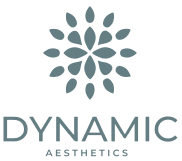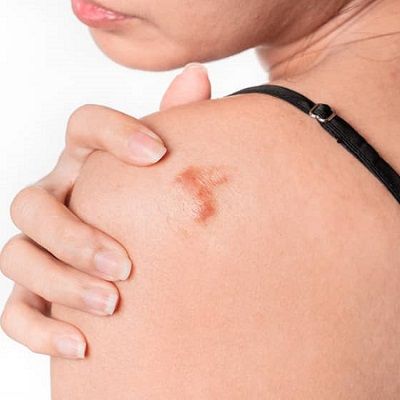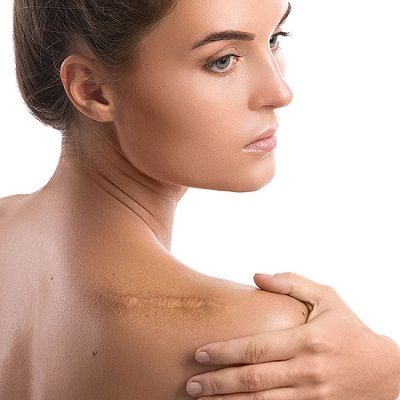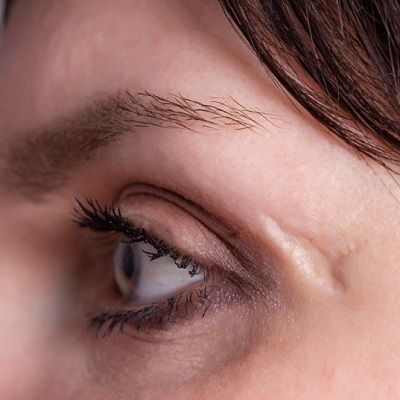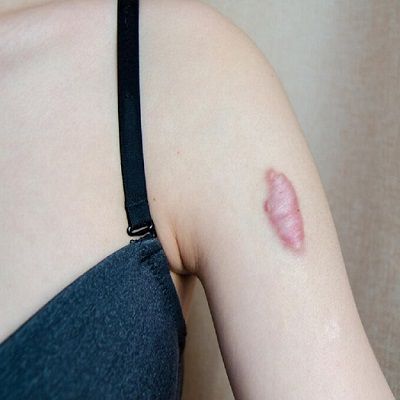
Skin is an essential organ of the body that aids in protecting the internal organs of the body. Skin composes of three layers that are present from the superficial to the deep layer. At some times the skin undergoes a trauma it forms a scar. In some cases, if the skin damage is to the inner layers and the healing process continues for a longer period of time. The person’s body starts producing more collagen to make the healing process faster but ends up forming a raised and bulging scar that makes the keloid formation after the healing completes. People often feel uncomfortable with the presence of these scars. And wants to get rid of it but they do not have enough information about How to choose the right keloid treatment in Dubai?
What is it?
A keloid is a sort of elevated, irregularly shaped scar that frequently spreads over the edges of the initial lesion. It results from an aberrant healing reaction to an injury, such as a burn, cut, scrape, breakout of acne, immunization, or even a body piercing. The resulting scar tissue is denser, tougher, and more atypical than usual scar tissue. Keloids can be unpleasant, itchy, or irritating, and in very rare instances, they can also restrict motion.
Cause and Symptoms of Keloid:
Keloids are elevated, thicker scars at the location of skin traumas including burns, scrapes, piercings, and acne. They develop because of an excess of collagen production at the injury site, which leads to an overgrowth of fibrous tissue. Keloids are more frequent in those with darker skin tones. Women experience them more frequently than males. However, research indicates that keloids might be influenced by genetics. Keloids cause different signs and symptoms which are as follows.
- Skin lesions that are clearly visible as raised lumps, usually at the site of an accident or wound.
- Areas of thickened skin that may feel rubbery or hard.
- Itching, burning, or discomfort at the location of the lesion.
- Discoloration of the skin around the lesion, which may be pink, red, or darker than the surrounding skin.
- In certain situations, a keloid may be painful.
- Scars that are more noticeable than the initial wound and may extend outside of it after the healing completes.
- Itching in the affected area.
Treatments:
Keloids are present on the superficial layer of the skin and do not cause any harm to the inner layers of the skin. But still, people feel uncomfortable with the presence of keloids on their skin. There are several treatment options available to treat the keloid formation.
Home Remedies:
A number of home treatments may help to shrink the keloid and lessen the symptoms that go along with it. Aloe vera, lavender oil, and tea tree oil are a few of these that may help to soften the scar and reduce its appearance.
Medication:
Topical as well as oral medication can help to treat keloid formation. Topical medication can reduce the symptoms that associate with keloids and reduce the visibility of keloids. Oral medication such as corticosteroids is very helpful to treat keloids. They can also be given through intravenous root. It causes the inflammation to get lower and decreases the chance of regrowth of keloids.
Laser Treatment:
Laser treatment is another successful option to treat keloids. In this procedure, the doctor applies light radiation on the affected area. It helps to flatten the bulged and raised surface of the keloid and reduces the chance of its regrowth. Laser treatment is a successful option for those who do not want a surgical treatment
Cryotherapy:
Cryotherapy is a procedure in which the keloid is frozen off using extremely low temperatures. This technique helps to lessen the size of the keloid as well as reduces some of its accompanying symptoms. In this procedure, the doctor uses liquid nitrogen that besides treating the keloids also causes discoloration in the affected area. However, this treatment is preferable for smaller keloids and scars.
Surgery:
Surgery is usually considered the last option for the removal of keloids. The doctor prefers this treatment when the keloid does not respond to other treatments. In this method, the doctor simply removes the keloid scar. He uses this method on larger keloids. However, the keloids can regrow after this procedure.
Aftercare:
The aftercare measures help to make the results potent and durable. Therefore, the doctor suggests following the preventive measures after the treatment completes.
- Maintain the treatment area tidy and dry
- Refrain from picking at the scab and let it heal on its own.
- Avoid placing the treatment area in the path of direct sunshine or other heat sources.
- Apply a thin coating of antibiotic cream twice daily on the affected area
- Keep an eye out for any infection-related symptoms including pus, swelling, or redness.
- Keep away from wearing tight garments that might cause friction.
- Regularly replace the dressing.
- Follow the directions on any recommended antibiotics or topical treatments.
- Schedule follow-up appointments with your dermatologist or physician.
Benefits:
The keloid treatment is beneficial and provides different benefits
- Reduce pain and itching in the area of the keloid
- Decrease the size and appearance of keloid
- Improve the self-esteem of the individual
- Reduce the risk of regrowth of keloid
- Enhance the quality of life by reducing pain and making people feel more comfortable with their appearance
Book A Consultation!
Dynamic clinic in Dubai has the most experienced and well-certified doctors. If you are still wondering How to choose the right Keloid treatment in Dubai & Abu Dhabi. Then contact our doctors by filling out the consultation form and book an appointment shortly to discuss your concerns.
